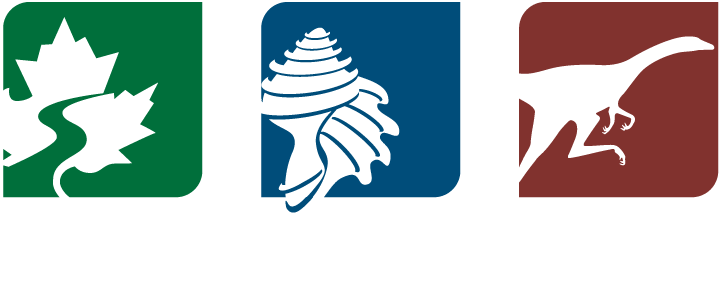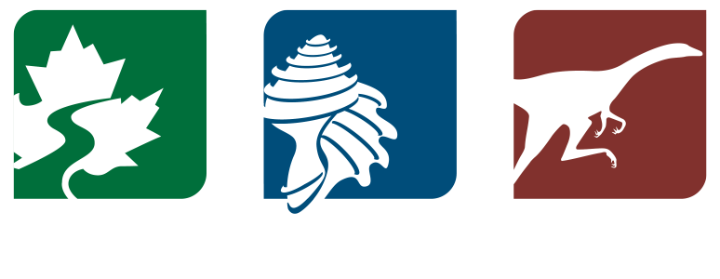Camila Martínez Aguillón
Camila Martínez Aguillón
Camila Martínez Aguillón
Paleoecologist
Camila Martínez Aguillon is a paleoecologist. She studies fossil tropical plants and ecosystems from Latin America and uses plant fossils to reconstruct ancient environments and climates.
Camila is originally from Bogotá, Colombia, and studied biology at the Universidad de los Andes for both her undergraduate and master’s degrees. She became interested in paleoecology as an undergraduate, because she saw paleoecology as a way to investigate the origins of tropical biodiversity. She was supported by a Fulbright Scholarship to attend Cornell University in Ithaca, New York, receiving her Ph.D. in 2019. Afterwards, she took a postdoctoral position (a temporary research position) at the Smithsonian Tropical Research Institute (STRI) in Panama. She is currently a faculty member at the Universidad EAFIT in Medellín, Colombia, and a National Geographic Explorer.
Camila studies the paleoecology, paleoclimate, and fossil plant diversity of the Neotropics (tropical regions of the Americas). Her research focuses on the Late Cretaceous (about 101 to 66 million years ago) to Paleogene (about 66 to 23 million years ago) fossil record of Colombia and the Neogene (about 23 to 2.6 million years ago) fossil record of Peru, although she has also worked on fossils from Argentina and the United States. One of her major projects has been the study of fossils from an Eocene (about 40-million-year-old) tropical dry forest that was exposed during dam construction on a river in northeastern Colombia. She is also exploring the evolution of vegetation on the Peruvian Altiplano (high plain). She has found that fossil plants indicate that the Andes in this region were not as high 10 million years ago as they are today.
Throughout her journey, Camila has met many great mentors and role models, including Alejandra Gandolfo. She says that her mentors “all have had one thing in common, they have allowed me to explore my ideas with freedom and trust, even when those seem risky and intricate. They have been supportive and inspiring.”
What are some of your biggest achievements and/or challenges so far in your career?
“My biggest achievement has been being able to come back to Colombia and work as a professor: applying some of the things I learned through the years abroad, and creating new research projects in understudied scientific fields here.“
In the field
Photos of the Camila in the field in collecting fossils (left) and in Panama (right). (Note: These image are part of a gallery. Click on each image to view at full size and read complete caption.)
Selected technical works by Camila Martínez Aguillón
Martinez, C. 2017. Passifloraceae seeds from the late Eocene of Colombia. American Journal of Botany 104: 1857–1866. Link
Martinez, C. 2018. Dalbergieae (Fabaceae) Samara Fruits from the Late Eocene of Colombia. International Journal of Plant Sciences 179: 541–553. Link
Martinez, C., T.Y.S. Choo, D. Allevato, K.C. Nixon, W.L. Crepet, R.S. Harbert, and C.P. Daghlian. 2016. Rariglanda jerseyensis, a new ericalean fossil flower from the Late Cretaceous of New Jersey. Botany 94 : 747–758. Link
Martinez, C., C. Jaramillo, A. Correa-Metrío, W. Crepet, J.E. Moreno, A. Aliaga, F. Moreno, M. Ibañez-Mejia, and M.B. Bush. 2020. Neogene precipitation, vegetation, and elevation history of the Central Andean Plateau. Science Advances 6: eaaz4724. Link
Martinez, C., C. Jaramillo, J. Martínez-Murcia, W. Crepet, A. Cárdenas, J. Escobar, F. Moreno, A. Pardo-Trujillo, and D. Caballero-Rodríguez. 2021. Paleoclimatic and paleoecological reconstruction of a middle to late Eocene South American tropical dry forest. Global and Planetary Change 205: 103617. Link
Selected popular works by Camila Martínez Aguillón
Martínez, C. 2017. Cretácico tardío [Late Cretaceous]. Pp. 54–57 in C. Jaramillo and L.H. Oviedo (eds.), Hace Tiempo: Un viaje paleontológico ilustrado por Colombia [Long ago: An illustrated paleontological journey through Colombia]. Smithsonian Institution and Instituto Humboldt, Bogotá, Colombia. Link
Further reading
Laspau. 2020. Fulbrighter Camila Martinez is using paleobotany to learn about the future. 11 February 2020. Link
López P., A. 2021. El bosque seco tropical más antiguo de Suramérica está en Colombia [The oldest tropical dry forest from South America is in Colombia]. El Tiempo, 6 September 2021. Link
National Geographic. 2020. #NGXplorers: Camila Martínez. 13 August 2021. Link
National Geographic. 2020. Un árbol fosilizado de 10 millones de años ofrece indicios sobre cómo fueron los Andes peruanos en la antigüedad [A fossilized, 10-million-year-old tree offers clues to what the Peruvian Andes were like in antiquity]. 31 August 2021. Link
Pedraza Bravo, N. 2020. La bogotana que viaja en el tiempo por medio de fósiles de plantas [The Bogotá woman who time travels through plant fossils]. El Espectador, 18 September 2020. Link
Wight, A. 2021. Office in the forest: Meet the Colombian unraveling fossil plant mysteries. Forbes, 16 September 2021. Link
Acknowledgments
This page was added to the online exhibit with the assistance of funding to Caren Shin from the President’s Council of Cornell Women.




